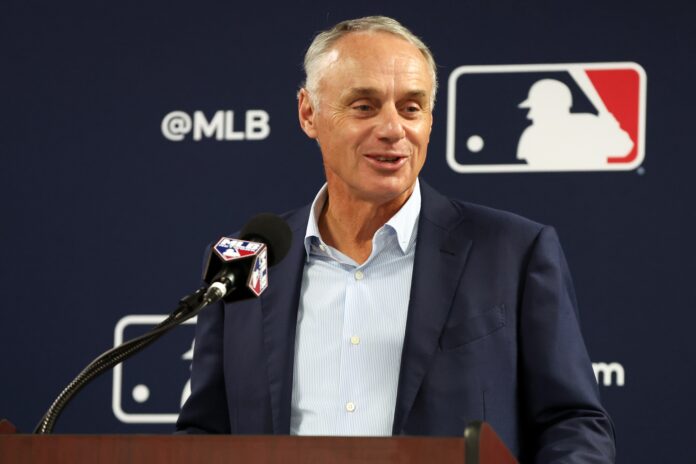
Baseball might just be headed straight for another cold, dark, contentious offseason in 2026. We’re talking about labor talks that already sound like a brawl waiting to happen — and the main event? That old, stubborn, endlessly controversial heavyweight: the salary cap.
Players Are Bracing for a Lockout, and They’re Not Hiding It
At the All-Star Game, Mets slugger Pete Alonso didn’t mince words. “We all know they’re going to lock us out,” he said, as casually as if he were predicting rain. And when an All-Star drops that kind of line during a celebration of the game, you know something’s brewing — and it ain’t good.
The current collective bargaining agreement (CBA) ends on December 1, 2026. Baseball has seen nine work stoppages in its history, and after the 99-day lockout that nearly derailed the 2022 season, most insiders expect a repeat. Only this time, the fight may zero in on a salary cap proposal that players have long viewed as the sports equivalent of poison.
Big-Market Teams Are Spending Big, While Smaller Clubs Watch From the Sidelines
Commissioner Rob Manfred’s been sounding the alarm on two fronts: ballooning payroll disparity and a shrinking revenue pool, particularly from floundering regional sports networks. In plain English, the big markets are spending like there’s no tomorrow (hello Dodgers, hello Mets), while small-market teams — and fans — are left asking why their clubs can’t afford top-tier talent.
Despite a luxury tax designed to curb overspending, the Dodgers are sprinting past it like it’s not even there, posting a record $400 million payroll and coughing up a jaw-dropping $151 million in taxes. The Mets? Not far behind, launching 2024 with a $326 million roster, while the Marlins are scraping by with just $69 million.
That kind of disparity is exactly what has some in ownership pushing for change, and what has the union digging in for a fight.
The Battle Lines Are Drawn: Salary Cap Talk Meets Union Resistance
“A salary cap is not about growing the game,” says MLBPA chief Tony Clark. “It’s about profits. It pits players against each other. It’s institutionalized collusion.” Strong words — and ones echoed by super-agent Scott Boras, who dismisses the cap pitch as a sugary trap for younger players. “The gingerbread house,” he calls it — you know, the one from the fairy tale where the witch waits inside.
And the players have a point. Juan Soto just signed for $765 million. Shohei Ohtani? $700 million. Compare that to the NFL’s biggest deal (Josh Allen’s $250 million), and you can see why baseball’s elite want to keep the current model rolling.
But Commissioner Manfred says the wealth isn’t being spread. He points out that 10% of players rake in 72% of the total salary pool. He isn’t pushing the word “cap” exactly, but he is nudging the conversation toward systemic change. Think: a revenue floor, a ceiling, and a more balanced field.
Still, the union sees a trap. And if history is any indication, this won’t be resolved quietly. We’re looking at a slow-burn standoff that’s likely to explode once the current deal expires.
Mark your calendars: December 1, 2026. Because if things keep moving in this direction, it might be the first time since 1995 that regular-season baseball gets sacrificed on the altar of labor war.


